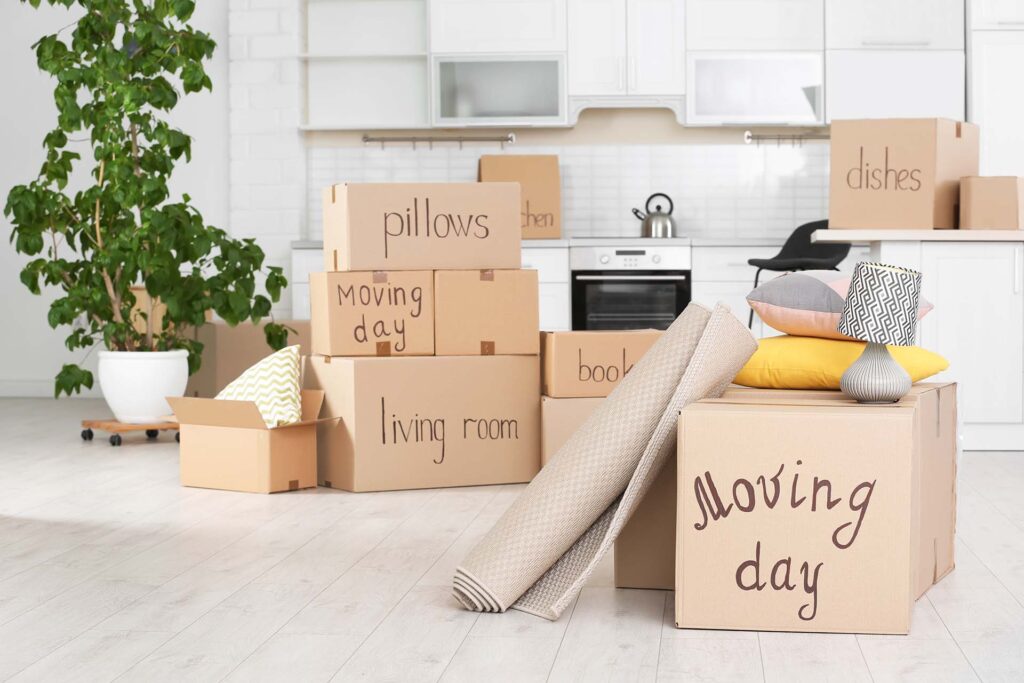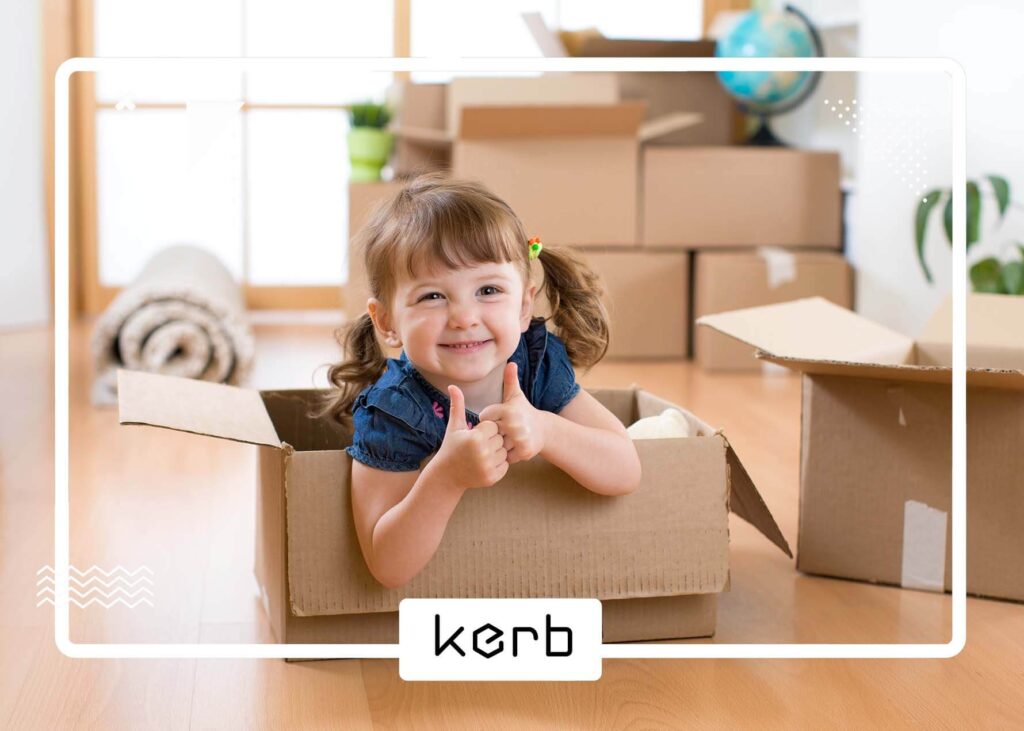The average American moves around 12 times in their lifetime. Considering that 15 million households move each year, it’s no wonder Americans consider relocation to be one of the most stressful events in life. But it doesn’t have to be. If you learn how to downsize for a move, you will have a smooth and fast transition.
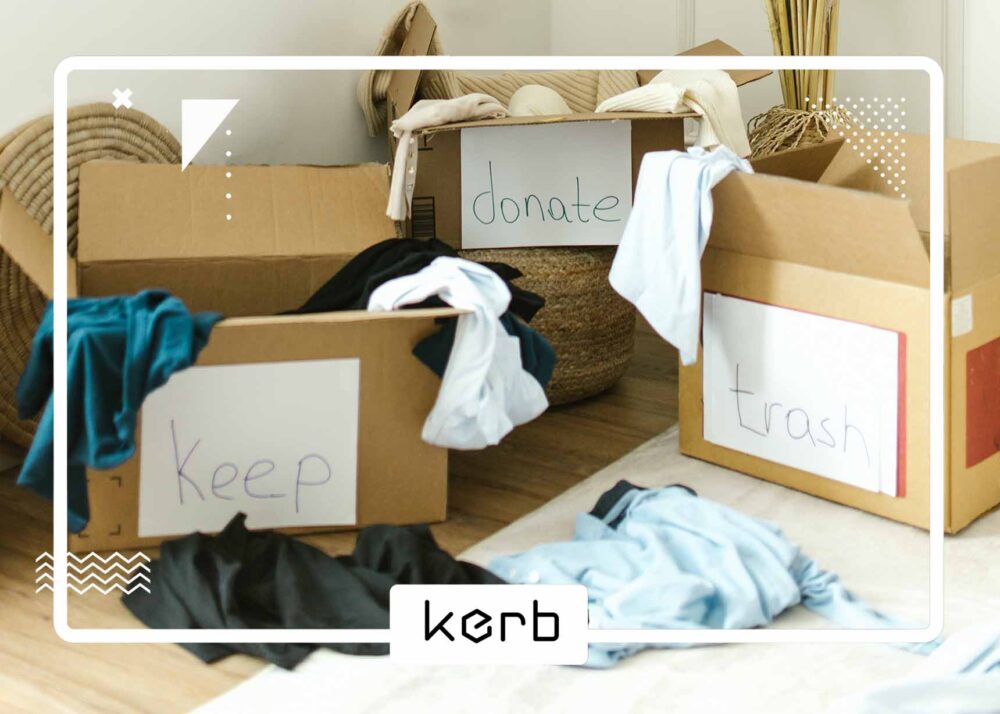
It is no secret that the most stressful part of every move is packing and sorting your belongings, and the best relocation hack you can implement is to minimize their quantity as much as you can. But how to downsize a home and where to start when doing so? The answer to these questions lies in good planning, organization, and willingness to let things go. And if you manage to implement our advice, your relocation will be stress-free and without much fuss.
Plan Ahead and Book Your Long-Distance Moving Company
An early beginning is a key to a successful relocation. If you’re finished with house hunting and already know what your new place looks like, your decluttering will be much easier. But even if you don’t have a place already, if you reduce your belongings to a minimum, you’ll have a cheaper relocation and a much more relaxed settling in.
So think ahead and begin with shrinking as soon as you book your long-distance movers for cross-country moving services. And even if you’re only relocating from house to apartment in the same city, it would be advisable to declutter before your local moving crew arrives. Begin with all preparations at least three months in advance. This way, you will be able to finish everything without much relocation stress.
Think About Storage Space in Your New Home
Even if you haven’t bought your new home, you probably have some idea about the size and type of the place you wish. So think about that when deciding what to get rid of. For example, if you plan to purchase a home with a garage, great. If not, make sure you have at least a mental blueprint for placing each thing you plan to bring with you. And If you don’t have a place yet and plan to use storage facilities before finding accommodation, again, do not overpack. Many things can get damaged in storage units if not packed properly, so be very careful about it.
Take Inventory of Your Belongings
Making an inventory list of your belongings will be useful not only for decluttering but for packing too. For example, in-home estimation of your move will be much more precise if you have a list of everything you plan to bring along.
Also, when deciding what to keep, the things you need will come to the surface much easier. Start with the big stuff, like furniture. Go in every room, write down each piece of furniture you plan to bring, and finish with smaller things later.

Clear One Space in Your Home and Use It as a Sorting Station
How do you prepare for a downsize move? Well, before you begin the purge, you will need a place where you can do additional sorting and packing. Clear one room in your house and use it for this purpose, preferably garage or basement or some other room you don’t use that frequently. So, logically, this room will be the first for decluttering.
If you choose a garage for this purpose, you will probably end up with a lot of boxes filled with belongings and memories you haven’t used or thought about in a while. Go through each box and decide which family memorabilia are worth keeping. For example, not all your kid’s school projects have to be salvaged, or if you have a ton of souvenirs from some family trip, keep only the ones that bring up the strongest memories.
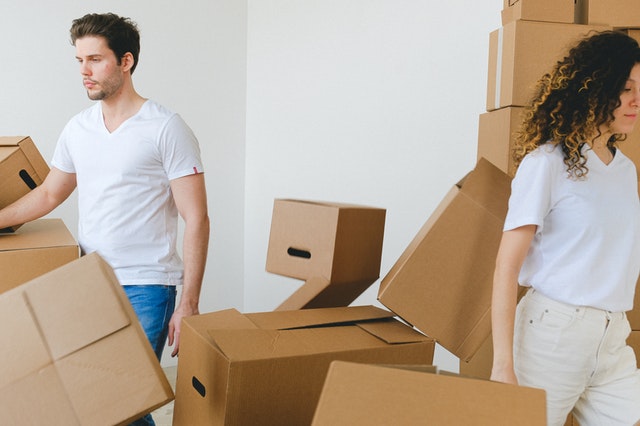
Downsizing Your Home – Best Decluttering Tips
Now that you have a room where you can sort things out, it is time to begin with purging. If you wonder, “how do I start decluttering to move,” the golden rule is to go room by room at your own pace and make “to keep” and “get rid of” piles in each room. Do not throw away anything right away because you might throw something valuable in the spur of the moment.
When deciding what to keep, you should implement another rule – “throw out everything you haven’t used in more than two years.” So if you have a dress or jeans you haven’t worn since your college days, toss them. You will have fewer things to pack and feel much better. Here are some things that would be good to go away:
- Old toys,
- Magazines,
- Old clothing,
- Bills and coupons,
- Old electronics,
- Books you don’t like.
Make Donate, Sell, or Toss Away Piles
Relocating to a new home demands a lot of preparation but also money. So to have a more efficient move, why not kill two birds with one stone? Put each dump pile you made in your garage and begin another round of sorting. Go through your belongings and decide what can be sold and what can be donated. You can search online where you can donate clothing for the homeless or, if you have a bunch of kids’ toys, ask around where you can donate them.
Go Through Your Collections Carefully
If you have potentially valuable belongings you can’t bring with you for any reason, make sure to do a good evaluation of them. For instance, your antique china might be quite valuable. Even old magazines can have value for someone. There are a lot of collectors out there who may find your valuables worth at least a few bucks. So, before pricing those belongings, go online on eBay, Craigslist, or Facebook marketplace and see the approximate pricing for such items. It would be best if you could sell those items online, so make sure to offer them on time.
Organize a Yard Sale and Earn Some Money
On the other hand, many items will go much faster on a yard sale than online. So make sure to put a garage sale on your relocation to-do list. If you wanted to donate some furniture, try selling it on a yard sale first. Who knows, someone might need an old sofa or chair.
Also, be careful when pricing stuff. You don’t want to give away something valuable for a penny. Then again, when organizing a yard sale, don’t put out everything you plan to throw away. For instance, nobody wants to buy your old clothes or sheets. Here are some of the things you should not offer on a yard sale in any circumstances because they will drive customers away:
- Underwear,
- Expired food,
- Hygiene products,
- Pillows and bedding.

Pack Your Documents in the Best Way Possible
While you probably can afford a mistake with stuff like clothes or books, paperwork is a whole different story. Sorting your important documents will have to be done separately. So when going through each room and making piles, bring one box where you will put all the documents you come across. Then clear your schedule one day and devote yourself to this task because you will need a lot of concentration and energy to sort your documents. But once you do this, you will have a system in place and no need for sorting for a long time. You can divide documents into the following categories:
- Personal documents,
- House papers,
- Bank papers,
- Car papers,
- School records and certificates,
- Medical records.
And keep in mind one important rule – do not throw away anything without another checking. See this video for more tips on how to organize documents.
How to Downsize for a Move – Use Modern Technology
Nowadays, luckily, you can stop asking yourself a question, “how do you downsize things,” and actually do it. With the help of modern technology, you can shrink your office, photographs, and even books to a device that can fit in your pocket. So use this possibility – go green and digitalize everything you can. If you work from home and have to move office, scan all non-vital but yet important papers. Also, if you have a bunch of old tapes and VHSes, you can digitize them too. There are people providing this service, just search for them online.

Pay Extra Attention to Kitchen Items
We all know that kitchen can easily become a place for hoarding stuff. From plastic containers to a bunch of lids you do not have a pot for. For this reason, kitchen items will need extra determination when purging, especially if your new place has a smaller kitchen. Begin with your pots and pans and get rid of everything damaged, burned, or without a lid.
Go to your pantry next and throw away every expired piece of canned food and spices. Keep food that is good for eating and try to eat it before the relocation day. Or put it for a donation too. Do not forget about things from your freezer, too, as they will be wasted as well.
Best Packing Tip – Get Rid of All Duplicates
Another important rule when downsizing your kitchen is to get rid of all the duplicates. Keep only two sets of everything and throw the rest. If you have many mugs from different collections, throw them away, as well as all useless plastic containers. When you begin packing plates, only keep the sets you’re using. Or, if you have an unpacked set of plates you kept for special occasions, now it’s time to put it to use.
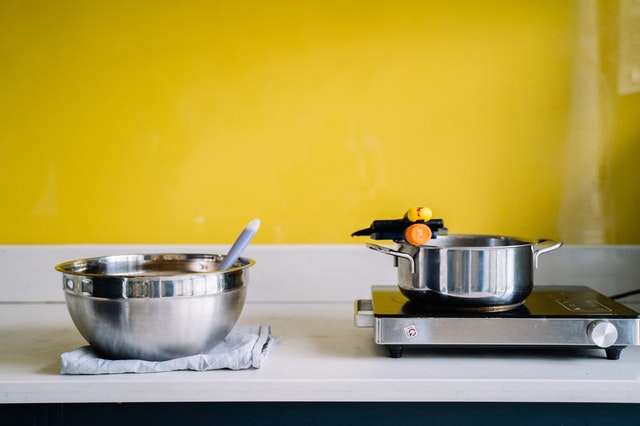
Sort Your Bathroom Items
When it comes to packing bathroom items, a lot of downsizing is in order. Begin with your hygiene products and throw away everything that has a lot of dust on it. Check expiration dates on your face cream, body lotion, and makeup, and get rid of it if it’s expired. Do the same with your medicines as well.

How to Prepare for Cross-Country Movers the Best Way
Well, knowing how to downsize when moving is the first step in preparing for movers. If you’re organized and start early, your anxiety about cross-country moving will be less. If you’re hiring movers for packing service, you will have to declutter sooner and be ready for them once they arrive. On the other hand, you can simultaneously pack and declutter if you plan to do all the packing alone. That is especially efficient if you have a last-minute relocation. Put all boxes in one room (ideally a garage, since it should already be emptied) so that movers can load everything from there. It’ll make the entire process much faster. Also, do not forget to prepare your vehicle for auto shipping as well. As you can see, long-distance moving will be much easier if you do a good downsizing. And if you never had time to purge your house, it is a great moment to do so.
